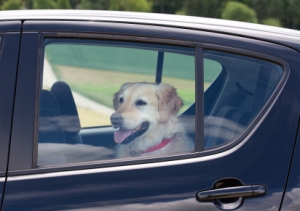
“What do I have to do to get Austin to feed the dog?”
“I’m so sick of having to walk the dog. Sophie begged us to get a dog. She said she’d do all the work. Now I end up doing everything. I’m tired of it.”
“We’ve tried bribes, a sticker chart, taking away privileges … nothing works. I’m at my wit’s end with Tyler. Max is HIS dog! Why can’t he understand that?”
“Hailey runs off to play with her friends and just leaves everything for me to do. I’m tempted to stop going behind her to make sure it gets done. If she doesn’t feed the dog, he doesn’t get fed. Period.”
“If the girls aren’t going to take care of the dog, we’re just going to take it back.”
I’ve heard this type of comment from frustrated moms repeatedly over the years. There’s one thing that eliminates all this stress and drama. It’s the one solution you probably don’t want to hear, but here it is.
Mom, no matter whose dog it is, it’s your dog. If you don’t want to take care of a dog, then don’t get a dog.
Ouch.
But think about it. Dads and kids love their dogs, but no matter whose dog it is, mom is the one who makes sure it’s fed, takes it to the vet, remembers vaccinations, remembers to refill the water even when everyone else forgets, housebreaks it, notices every limp and bump … even fixes a comforting place for the dog to stay during fireworks and trick-or-treating.
We can either resent this responsibility and create all sorts of drama for everyone, or we can embrace it and be not only better dog owners, but better wives and parents, too.
What if we looked at pet ownership as a great opportunity to train and teach our children, and walk alongside our kids as they learn? When children are raised with dogs, they learn about treating animals with compassion. They learn about the circle of life. And yes, they learn about responsibility. But putting an eight-year-old in charge of another living thing is not the way to teach these things. It’s unfair to both the child and the dog.
Here’s how to raise your kids with dogs and let them take part in their care.
YOUNGER KIDS
If your children are under 10, give them jobs to do that you can do with them. If your son’s job is to feed the dog, be sure you do it with him so you can see how much food he’s giving the dog, and verify that the dog has been fed. There’s no opportunity for him to forget. He gets into the healthy habit of doing something faithfully every day. It’s enjoyable, and he has the security of knowing that you’ll ensure that the two of you get it done. Feeding time turns into one-on-one time with mom, which totally rocks. Your son will look forward to this special time when you and he do something together, and you’ll find that he guards that time fiercely. As you do, there will be dozens of conversations about dog health, how the digestive system process food, why we all need food, how a dog’s diet differs from our diet … and so much more. This is good talk time. And when he’s older, you’ll be glad you got him in the habit of working and talking together.
OLDER KIDS
If your children are old enough to do some of the dog’s care duties by themselves, that does’t mean you abdicate responsibility for them. Check behind them. Verify that the job has been done. Every time. Every day. Not in a nagging way, but with a heart that says, “The kids help, but this is my responsibility.” Accountability will help your children to avoid the all-too-common slide into the habit of not doing something if they don’t feel like it.

When it’s time to feed the dog, a child can focus on the job, or she can focus on whether she feels like doing the job. If she focuses on her feelings, she’ll almost always talk herself out of it. Teaching children to act on their values rather than their feelings is very difficult in today’s culture. If she doesn’t learn to do the right thing in spite of how she feels, how will she ever do anything long enough to get good at it? How will she do her history homework on time? When she’s an adult, how will she get up every morning and go to work? How will she stay faithful to her husband? How will she restrain herself to a healthy diet, or get to the gym?
Show your child she must follow through on her responsibility to feed the dog. Don’t give her a way out. Help her develop the habit of rain-or-shine dependability. It’s better to verify that it’s done every day than to disengage from the process and then punish when it doesn’t get done. When you help her to remember every day, you’re on her side. You’re helping her. You’re teaching her. When you leave it up to her, and then take away privileges when the inevitable neglect occurs, you’re teaching her to resent the dog, the work, and you. Instead of seeing the dog as a beloved family member and taking pride in her role in caring for it, she’ll start resenting responsibility, which will set her up to be a child all her life.
“GIVING UP” TEACHES THE WRONG THINGS
Some parents at the end of their rope desperately cast about for big-impact ways to show their kids how important it is to care for their pets. They threaten to stop feeding the dog if the child forgets, or they threaten to give the dog away. These solutions are not fair to the dog and they’re damaging to kids.
Giving up on a pet weakens a child’s sense of security. Your kids need to know that you’ll be there for him no matter what. When you demonstrate a lack of concern for the health, comfort and security of a pet, the child will internalize it. He’ll start to wonder, “If I’m too much trouble or expense, what will happen to me?” Is it rational? No. But children aren’t rational. The younger they are, the more feelings-driven they are. And they need security more than almost anything else.
Isn’t it better to teach them how to be faithful to another living thing? Isn’t it easier on the parents, too? There’s so much less drama, fewer arguments, lower stress, less anger and less resentment if mom just takes responsibility for the family dog.

Parenting is tough. I think we get into a habit of looking for solutions that will give us less to do. This one takes more time, and we don’t like solutions that take more time. But it does make our lives easier, our relationships closer, our kids better, our self respect higher, and our dogs happier.
Let’s all stop worrying about what’s fair and do what’s best.
And you know what? At the end of the day, the dog knows. She know who loves her, who watches out for her, who knows her best, who’s always there. The hidden blessing peeks out when your dog curls up on your lap and looks up at you as if to say, “Thanks, mom.”
 We dog owners think that everyone is as enamored of our dogs as we are. It’s one thing to enjoy a dog at the park; it’s another thing to spend every weekday with the dog, especially if you’ve never had a dog. So before you hire a nanny, here are some things to think about.
We dog owners think that everyone is as enamored of our dogs as we are. It’s one thing to enjoy a dog at the park; it’s another thing to spend every weekday with the dog, especially if you’ve never had a dog. So before you hire a nanny, here are some things to think about.









 Next, get some high value rewards to help ensure that your dog will want to work with you even if there are exciting things happening all around him or her. Since the goal is to teach the dog to automatically sit whenever new people appear, don’t give the command to sit (he/she might not choose to respond anyway and I wouldn’t want to inadvertently teach my dog to ignore my commands). When the dog takes the initiative to sit, give a tasty treat. Any behavior that is rewarded should happen more often. Be patient during this process. It can take a bit of time before the dog figures out that it is the sitting that is getting him the tasty treats. Once my dog became more reliable about responding to each new person that came along with a sit, I would begin to work on teaching my dog or pup to maintain his or her sit for longer and longer periods of time.
Next, get some high value rewards to help ensure that your dog will want to work with you even if there are exciting things happening all around him or her. Since the goal is to teach the dog to automatically sit whenever new people appear, don’t give the command to sit (he/she might not choose to respond anyway and I wouldn’t want to inadvertently teach my dog to ignore my commands). When the dog takes the initiative to sit, give a tasty treat. Any behavior that is rewarded should happen more often. Be patient during this process. It can take a bit of time before the dog figures out that it is the sitting that is getting him the tasty treats. Once my dog became more reliable about responding to each new person that came along with a sit, I would begin to work on teaching my dog or pup to maintain his or her sit for longer and longer periods of time.
 If you’re like me, your dog leaves nose prints all over the windows, glass doors, and car windows. Dog slobber has mucous in it, so it can be slimier than saliva. Thicker, too, which is what makes it build up and stick so badly.
If you’re like me, your dog leaves nose prints all over the windows, glass doors, and car windows. Dog slobber has mucous in it, so it can be slimier than saliva. Thicker, too, which is what makes it build up and stick so badly.

 Funniest Dog Stuff Ever!
Funniest Dog Stuff Ever!